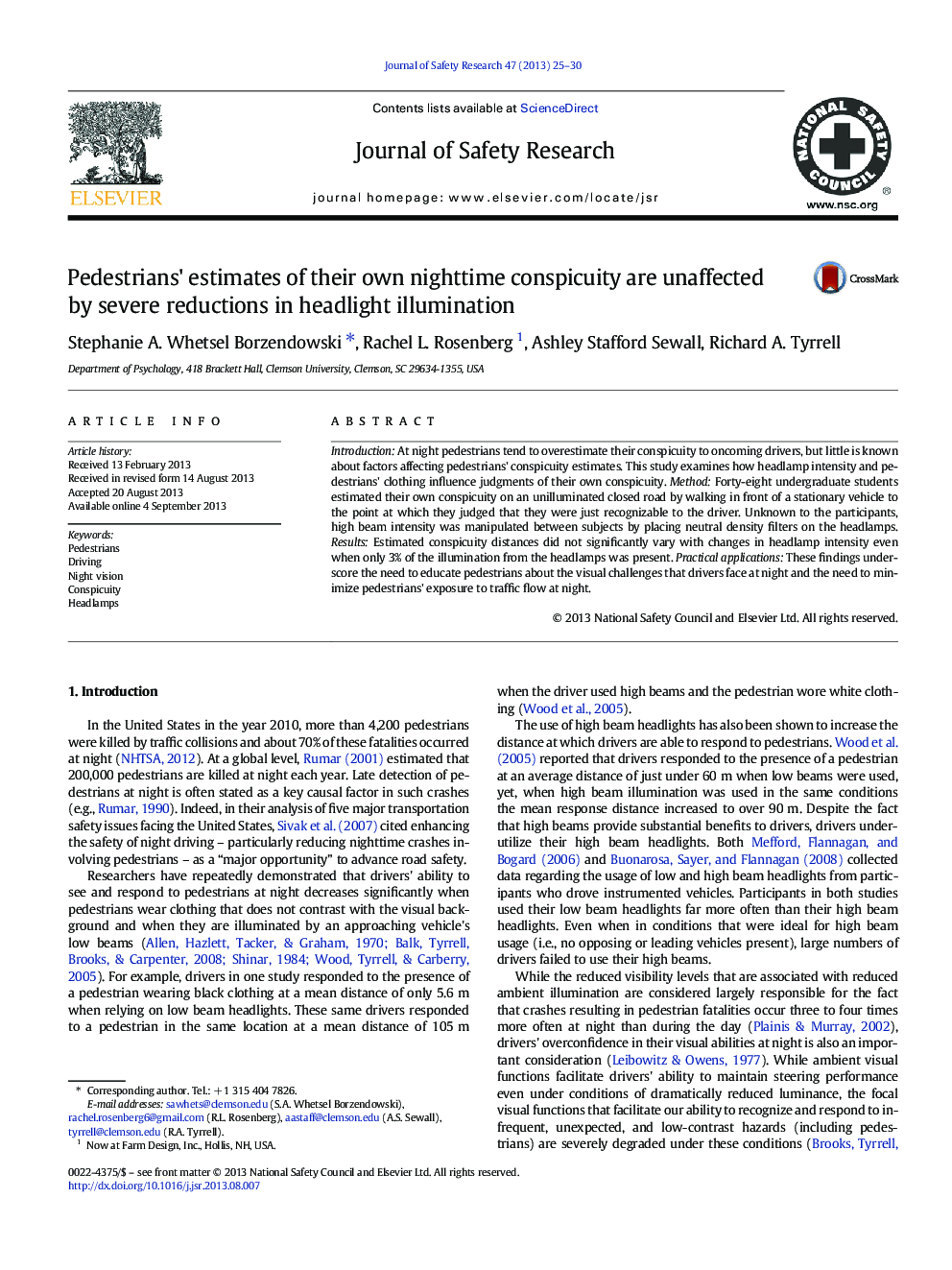| Article ID | Journal | Published Year | Pages | File Type |
|---|---|---|---|---|
| 587437 | Journal of Safety Research | 2013 | 6 Pages |
•Pedestrians' estimates of their own conspicuity at night were unaffected even when high beam intensity was reduced by 97%.•Pedestrians may not appreciate the visual challenges that drivers face at night.•These findings underscore the need to educate pedestrians about the dangers of walking near traffic at night.
IntroductionAt night pedestrians tend to overestimate their conspicuity to oncoming drivers, but little is known about factors affecting pedestrians' conspicuity estimates. This study examines how headlamp intensity and pedestrians' clothing influence judgments of their own conspicuity.MethodForty-eight undergraduate students estimated their own conspicuity on an unilluminated closed road by walking in front of a stationary vehicle to the point at which they judged that they were just recognizable to the driver. Unknown to the participants, high beam intensity was manipulated between subjects by placing neutral density filters on the headlamps.ResultsEstimated conspicuity distances did not significantly vary with changes in headlamp intensity even when only 3% of the illumination from the headlamps was present.Practical applicationsThese findings underscore the need to educate pedestrians about the visual challenges that drivers face at night and the need to minimize pedestrians' exposure to traffic flow at night.
